Last updated on
Discover the thickness of kitchen cabinet doors as we delve into various materials, designs, and industry standards to help you make informed decisions for your next home improvement project.
Kitchen cabinets are an essential part of any home decor. They not only provide a functional storage solution but also add aesthetic value to your kitchen.
However, when it comes to choosing the right cabinet doors, there are many factors that you need to consider – color, material, style, and thickness. While the first three factors are easy to understand and decide upon, the thickness of cabinet doors is often overlooked.
In this article, we will explore how thick kitchen cabinet doors should be and why it matters for your home decor. So let’s dive in!
What's Inside
Standard Cabinet Door Thickness
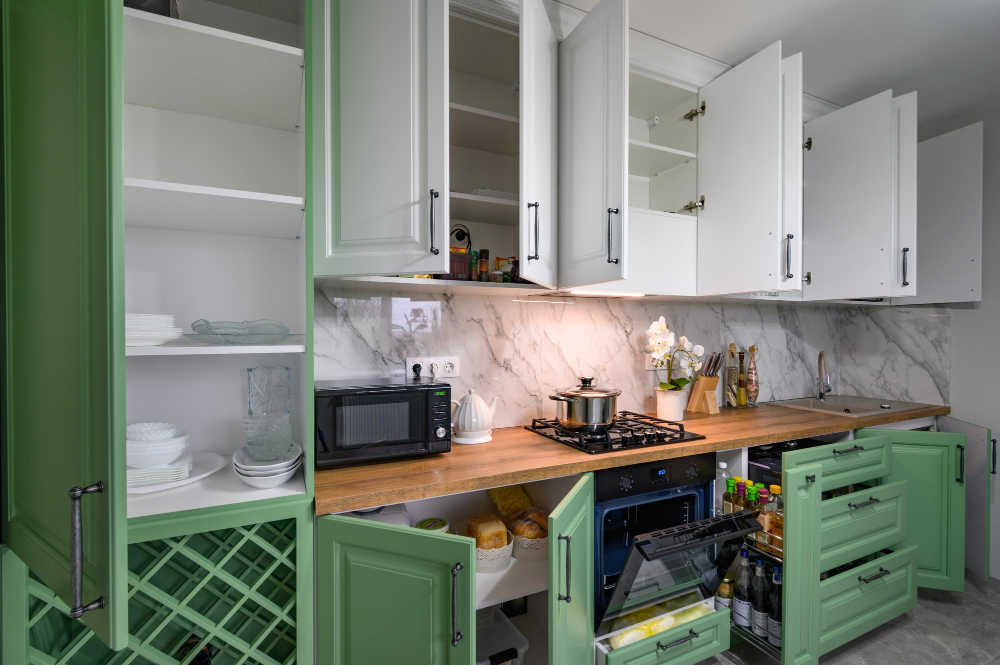
When it comes to kitchen cabinet doors, there is a standard thickness that most manufacturers follow. The industry standard for cabinet door thickness is ¾ inch (19mm).
This measurement applies to both the base and wall cabinets. However, some manufacturers may offer thicker or thinner options depending on the material used.
It’s important to note that while ¾ inch is considered the norm, it doesn’t mean you can’t opt for a different thickness if you prefer. Thicker doors can provide more durability and sturdiness but may come at an additional cost.
On the other hand, thinner doors are lighter in weight and less expensive but may not be as durable over time.
Factors Influencing Door Thickness
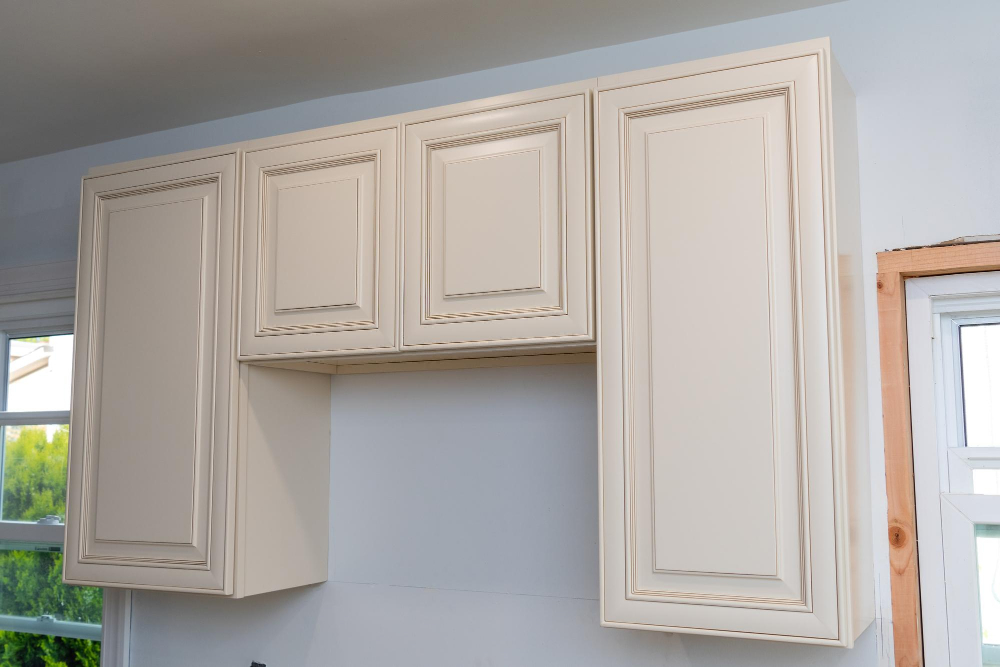
One of the most important factors is the type of material used to make them. For instance, solid wood doors are thicker than MDF or thermofoil doors because they are more durable and can withstand wear and tear better.
Another factor that influences door thickness is the style or design you choose for your cabinets. Inset cabinets require thicker doors than overlay cabinets because they need to fit inside a frame rather than on top of it.
The size and weight of your cabinet door also play a role in determining its thickness. Larger, heavier cabinet doors may require additional support from thicker materials to prevent warping or sagging over time.
Personal preference can also influence how thick you want your kitchen cabinet doors to be. Some people prefer thinner profiles for a sleeker look while others opt for thicker profiles as they provide added durability and sturdiness.
Material Options for Cabinet Doors
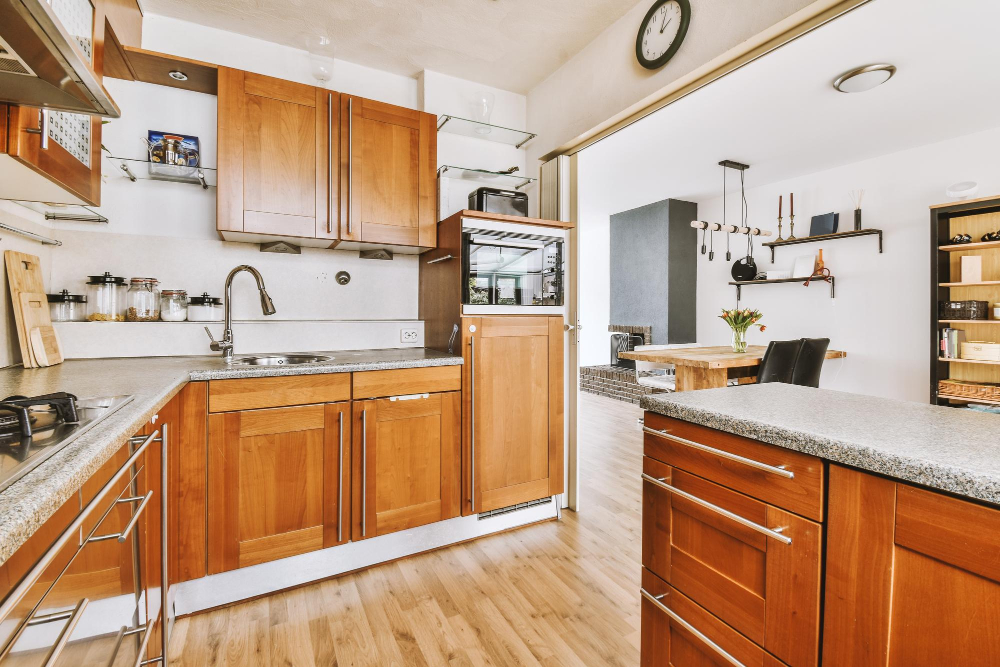
Each material has its own unique properties that can affect the thickness of your cabinet doors. For instance, solid wood is a popular choice for traditional and rustic kitchens due to its durability and natural beauty.
However, solid wood cabinets tend to be thicker than other materials because they need more support.
On the other hand, MDF (medium-density fiberboard) is a cost-effective option that offers versatility in terms of design and finish options. MDF cabinets are typically thinner than their solid wood counterparts but still provide adequate strength and stability.
Thermofoil is another popular option that features a vinyl coating over an MDF core or engineered wood substrate. Thermofoil cabinets offer excellent moisture resistance while being lightweight compared to other materials.
Plywood is also commonly used as it provides good structural integrity while being relatively lightweight compared with hardwoods like oak or maple.
Plywood Cabinet Door Thickness
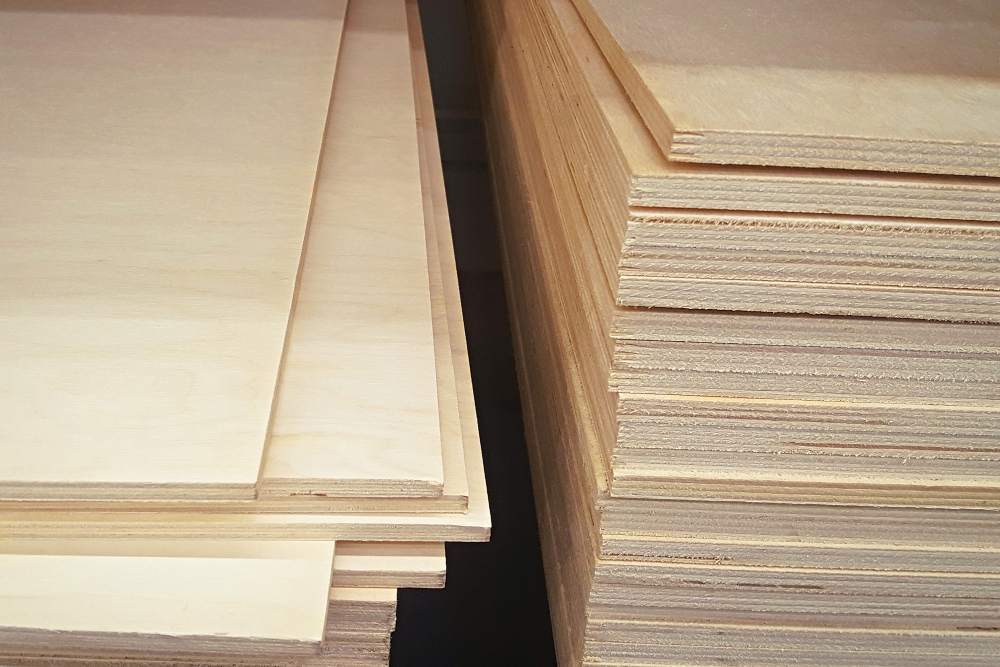
When it comes to plywood cabinet doors, the thickness can vary depending on the design and intended use. The standard thickness for plywood cabinet doors is ¾ inch or 18mm.
However, some manufacturers may offer thinner options such as ⅝ inch or even less. Thinner plywood may be suitable for smaller cabinets where weight isn’t an issue but thicker options are recommended for larger ones that will hold heavier items.
It’s important to note that while thicker plywood offers more stability and strength than thinner ones; it also adds weight which can affect door hardware performance over time if not properly installed.
When choosing a thickness of your plyboard cabinet door consider factors like budget constraints, desired aesthetics (thicker panels provide more depth), functionality (thicker panels offer better insulation), among others. Plywood remains one of the most versatile materials used in making kitchen cabinetry today because of its cost-effectiveness compared with other materials like solid wood.
MDF Cabinet Door Thickness
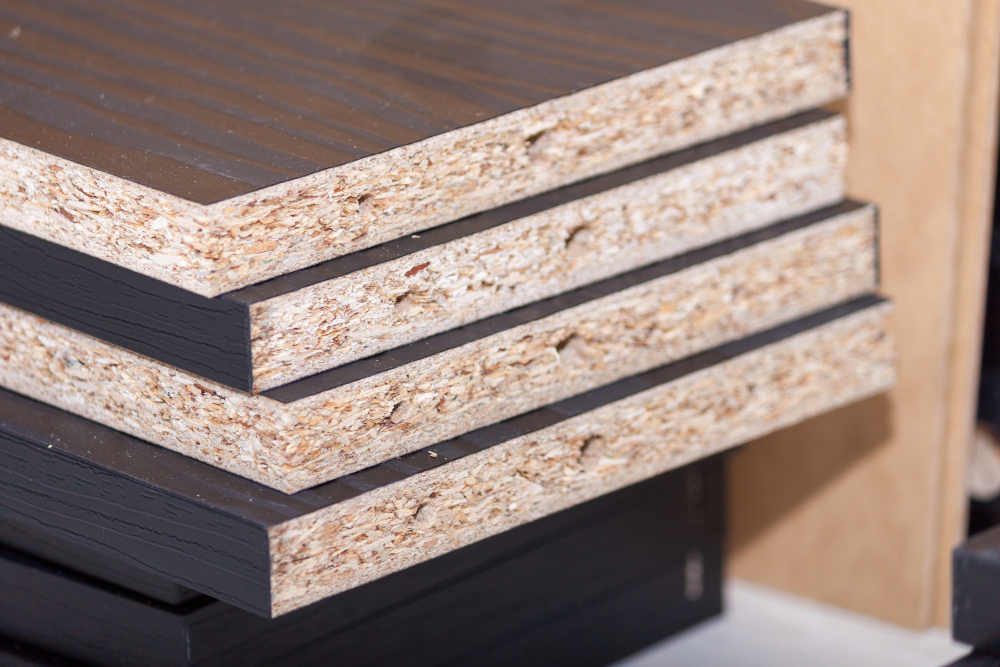
MDF cabinet doors are made by compressing wood fibers with resin under high pressure, resulting in a smooth and uniform surface that can be painted or laminated to mimic the look of natural wood.
When it comes to thickness, MDF cabinet doors typically range from 1/2 inch to 3/4 inch. The thicker the door, the more durable it will be over time.
However, thicker MDF doors may also add weight and cost.
One advantage of using MDF for your kitchen cabinets is that you can achieve a consistent look across all your cabinets since they are manufactured in large sheets before being cut into individual pieces. Because they do not expand or contract like solid wood does with changes in temperature and humidity levels, there’s less risk of warping or cracking over time.
However, one downside of thinner MDF cabinet doors is that they may not hold up as well against heavy use compared to their thicker counterparts. If you have young children who tend to slam cupboard doors shut frequently or if you plan on storing heavier items inside your cupboards regularly – then opting for slightly thicker (3/4-inch) panels might be worth considering.
Solid Wood Cabinet Door Thickness
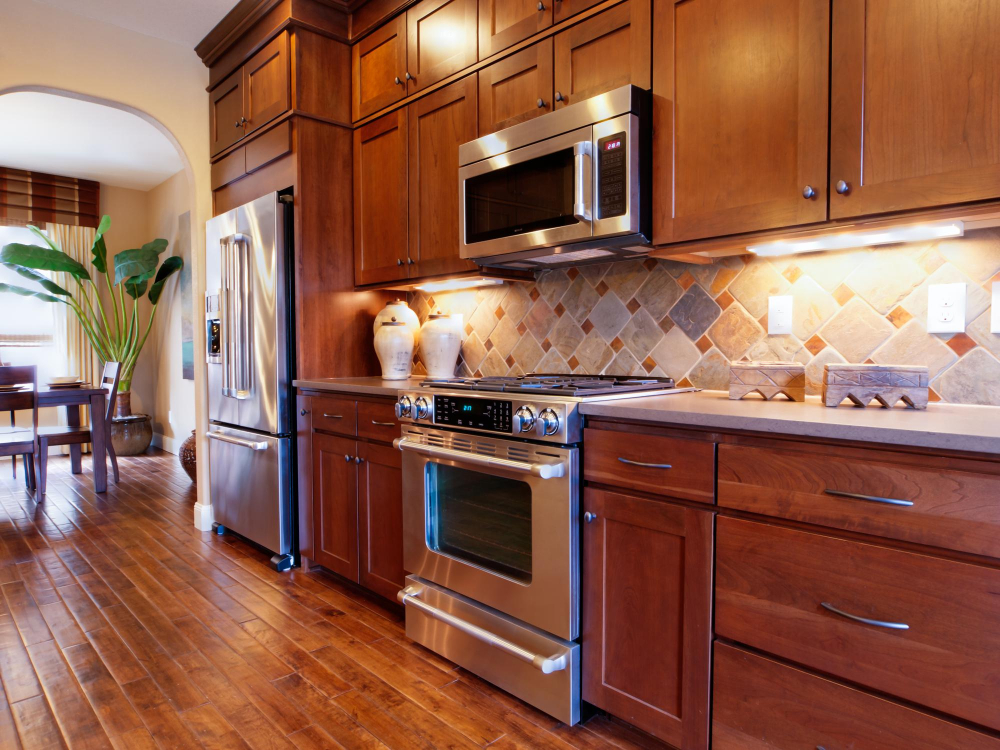
The thickness of solid wood cabinet doors can vary depending on the type of wood used, but generally, they range from 3/4 inch to 1 inch thick.
The thicker the door, the more durable it will be over time. Solid wood is less likely to warp or crack than other materials like MDF or plywood because it has a higher density and strength.
However, thicker solid wood cabinet doors also come with some downsides. They can be heavier than thinner options which may make them harder for some people to open and close comfortably.
They may require stronger hinges or hardware that can support their weight.
Thermofoil Cabinet Door Thickness
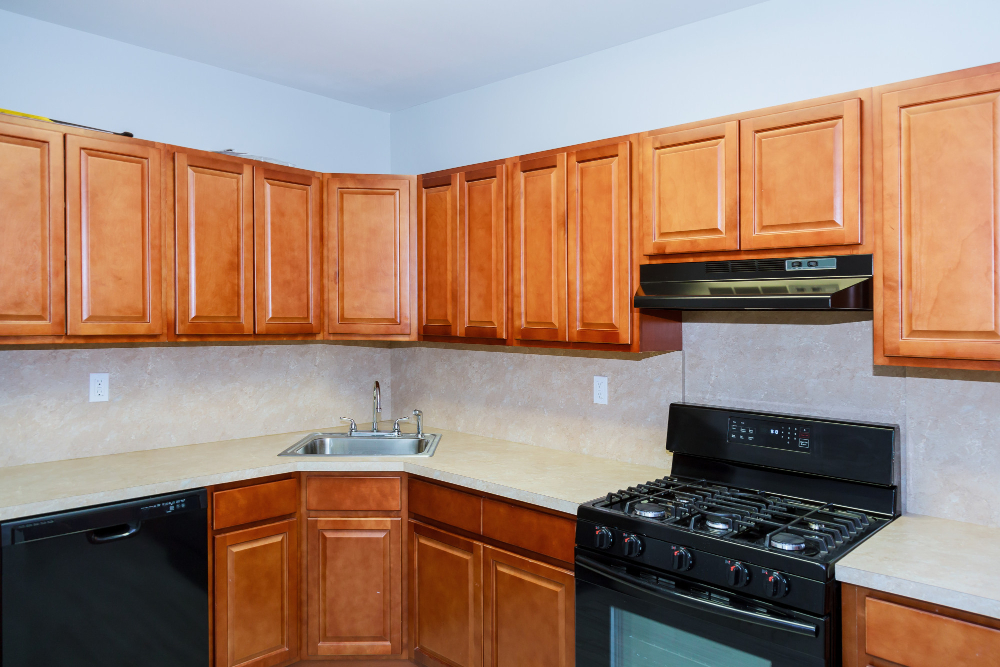
Thermofoil cabinets are made by applying a thin layer of vinyl onto an MDF or engineered wood substrate. The thickness of thermofoil cabinet doors typically ranges from ¾ inch to 1 inch.
One advantage of thermofoil cabinets is that they can be made in various styles and designs, including raised panel, flat panel, and shaker-style doors. However, the thickness may vary depending on the design you choose.
When it comes to hardware installation on thermofoil cabinet doors with different thicknesses than standard ones (3/4″ thick), it’s important to ensure that your chosen hardware will fit properly without causing any damage or compromising the integrity of your cabinetry.
Inset Vs. Overlay Cabinet Door Thickness
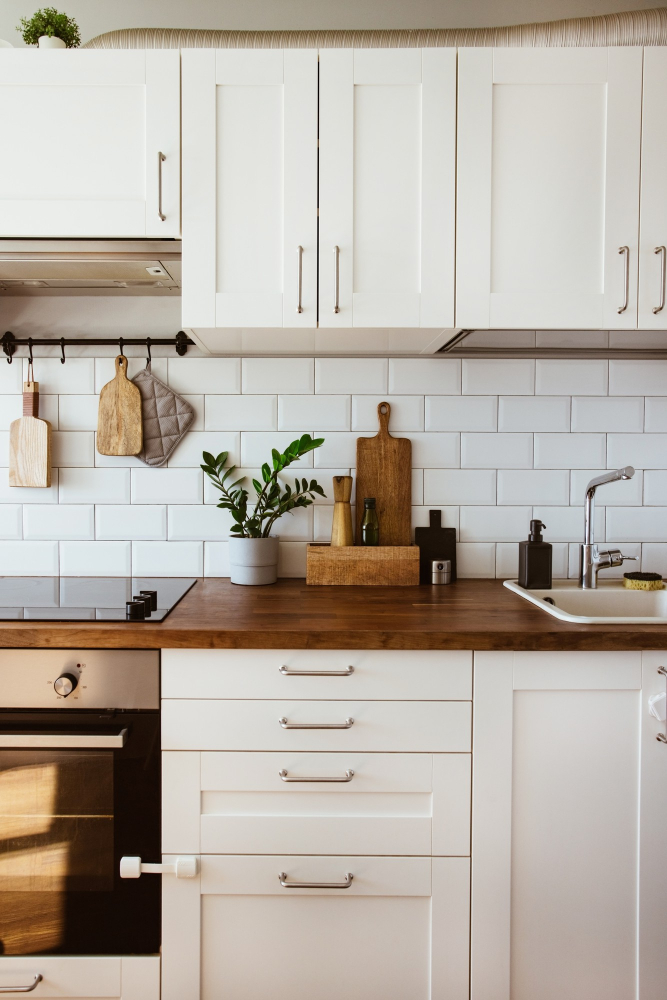
Inset and overlay are two popular styles that homeowners often choose for their kitchen cabinets.
Inset doors sit flush with the face frame of the cabinet, creating a seamless look that is both elegant and timeless. These doors require precise measurements during installation to ensure they fit perfectly within the frame without rubbing or sticking.
Overlay doors, on the other hand, rest on top of the face frame and partially cover it. There are two types: partial overlay (also known as standard) where some parts of each door overlap with adjacent ones; full-overlay where there is no visible gap between adjacent doors.
The thickness required for inset vs overlay cabinet doors can vary depending on several factors such as material type and construction method used by manufacturers or custom builders alike.
For example, if you opt for an inset design made from solid wood materials like cherry or maple hardwoods – which tend to be thicker than MDF options – then you may need thicker panels in order not only accommodate this style but also provide enough support so that hinges don’t sag over time due to weight distribution issues caused by heavier materials being used in construction processes compared against lighter-weight alternatives such as particleboard composite boards commonly found in many modern kitchens today.
Frameless Vs. Face Frame Door Thickness
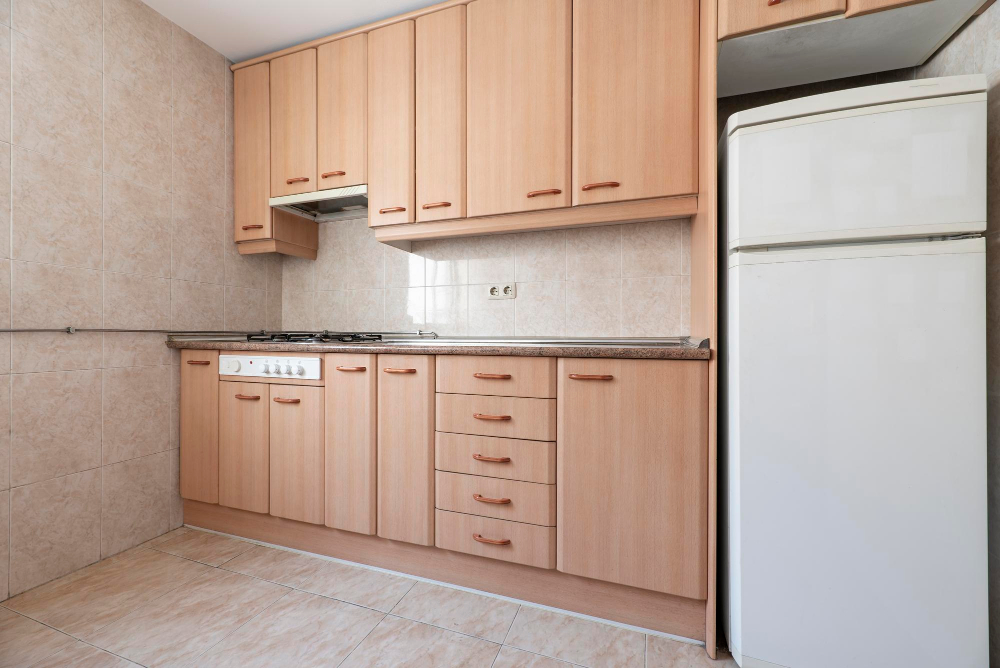
Frameless cabinets have a sleek, modern look with no visible frame around the door. Face-frame cabinets have a wooden or plastic frame that surrounds the door.
The thickness of your cabinet doors will depend on whether you choose a face-frame or frameless design. In general, face-framed cabinets require thicker doors because they need to be strong enough to support the weight of the frames and hinges.
Frameless cabinets can use thinner materials for their doors since they don’t need as much structural support from their frames. However, this doesn’t mean that all frameless cabinet doors are thin – some homeowners prefer thicker materials for aesthetic reasons.
Different Types of Cabinet Door Construction
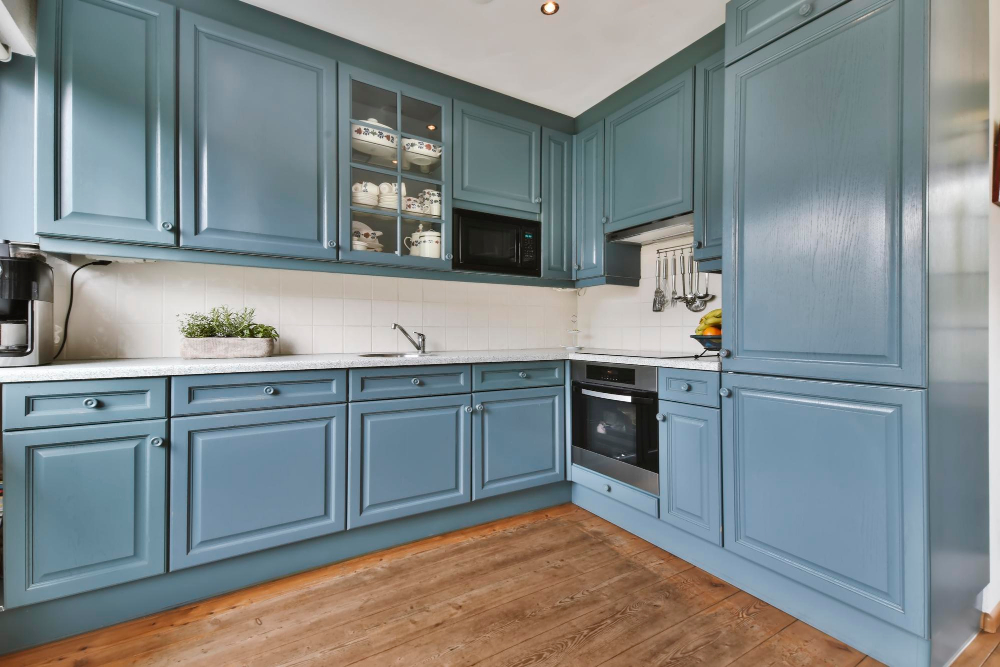
The most common ones include framed, frameless, and inset doors.
Framed doors have a frame that surrounds the center panel. This type of construction is popular for traditional or classic kitchen designs as it adds depth and dimension to the cabinets’ appearance.
Frameless doors do not have a surrounding frame but instead rely on thicker side panels for support. They offer more storage space than framed cabinets since they don’t require extra room for frames.
Inset cabinet doors sit flush with the face of the cabinet box when closed and are often seen in high-end custom cabinetry due to their precise fit and clean lines.
Each type has its own advantages depending on your design preferences, budget constraints, or functionality needs.
Impact of Thickness On Door Hardware
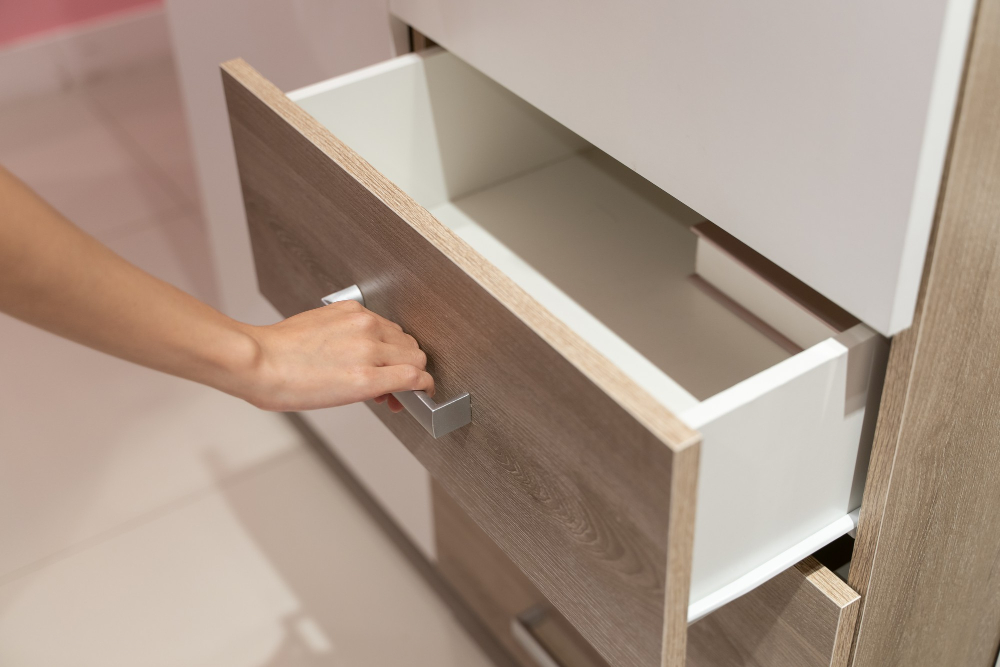
If your cabinet doors are too thin, they may not be able to support heavy-duty hinges or handles. On the other hand, if your cabinet doors are too thick, you may need longer screws or specialized hardware to ensure proper installation.
When choosing door hardware for your cabinets, it’s essential to consider the thickness of your cabinet doors and select appropriate products accordingly. For instance, if you have thin plywood or MDF (medium-density fiberboard) cabinets with a thickness range between 1/2 inch and 3/4 inch; standard hinges will work just fine.
However, thicker solid wood cabinets require more robust hinges that can handle their weight without sagging over time. In such cases where custom cabinetry is involved with varying door sizes and weights; soft-close concealed European-style hinge systems offer adjustability in all three dimensions – height adjustment via mounting plate position change; depth adjustment via cam screw turnings at each hinge arm location & side-to-side adjustments by loosening/re-tightening screws holding them onto frames/stiles/rails.
Pros and Cons of Thick Cabinet Doors
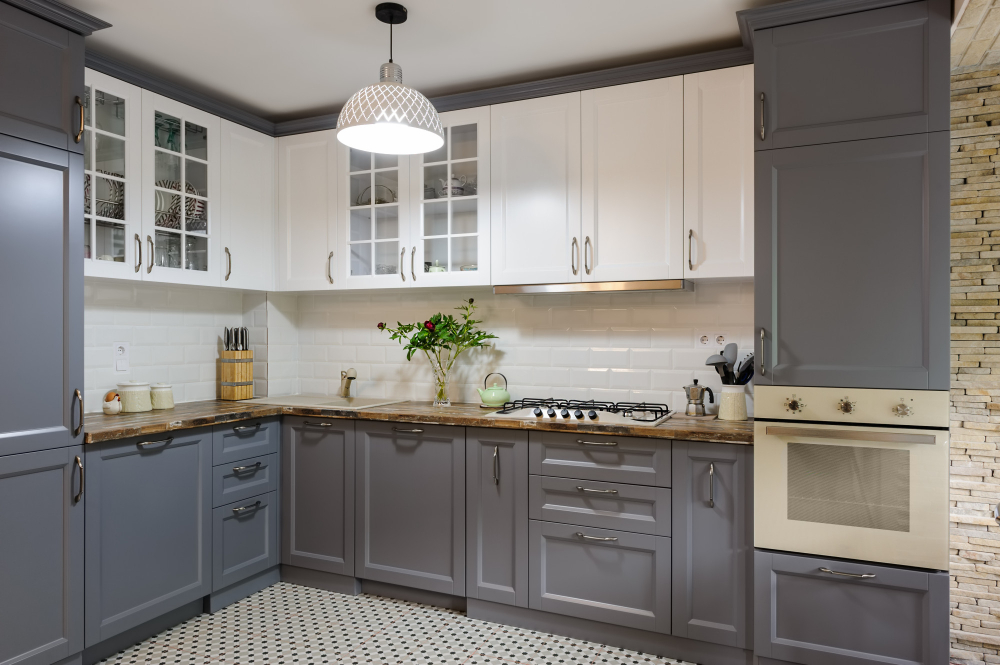
Let’s take a closer look at them.
Pros:
- Durability: Thick cabinet doors are more durable and less likely to warp or crack over time.
- Soundproofing: Thicker materials can help reduce noise levels in the kitchen, making it a quieter space.
- High-end Look: Thick cabinet doors give off an upscale appearance that can add value to your home.
Cons:
- Costly: Thicker materials cost more than thinner ones, which means thicker cabinets will be pricier overall.
- Heavyweight Doors: The added thickness makes the door heavier, which may require stronger hinges or hardware for support.
- When deciding on whether thick cabinet doors are right for you, consider your budget and desired aesthetic. If durability is important to you and you’re willing to spend extra money on high-quality materials that will last longer without warping or cracking over time – then thick cabinets might be worth considering. However, if cost is a concern or if you prefer lighter-weight cabinetry with sleeker lines – thin cabinets may be better suited for your needs. Ultimately it comes down to personal preference but understanding the pros and cons of each option can help make an informed decision when selecting new kitchen cabinetry!
Pros and Cons of Thin Cabinet Doors

There are pros and cons to consider before making this decision.
Pros:
- Cost-effective: Thin cabinet doors cost less than thicker ones, which can help you stay within your budget.
- Lightweight: Thin doors weigh less than thick ones, making them easier to install and handle during the installation process.
- Space-saving: If you have limited space in your kitchen or pantry area, thin cabinet doors can be a great option as they take up less room when opened.
Cons:
- Durability concerns: Thin cabinet doors may not be as durable as thicker ones. They may warp or bend over time due to changes in temperature and humidity levels.
- Limited design options: Thinner materials like thermofoil or laminate offer fewer design options compared with solid wood or MDF cabinets that come in various styles and finishes.
- When deciding between thin vs. thick cabinets door thicknesses for your home decor project, it’s essential first to evaluate what matters most – durability versus affordability? Style versus functionality? Ultimately the right choice depends on personal preference along with practical considerations such as budget constraints and available space requirements.
Choosing the Right Door Thickness
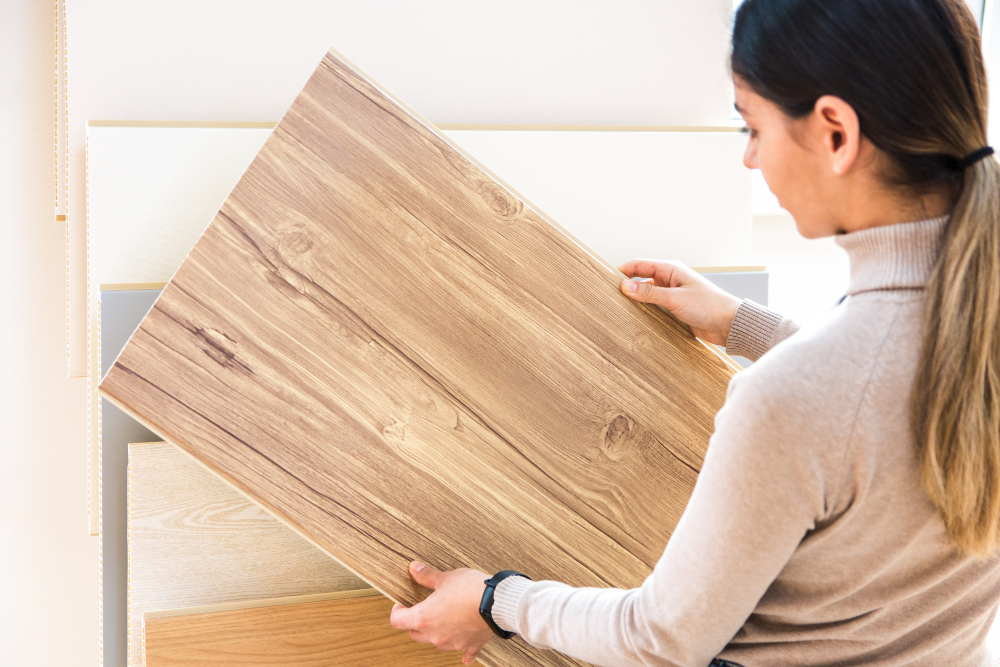
The thickness of cabinet doors can range from ¼ inch to 1 inch or more depending on the material used and construction method. Thicker doors tend to be sturdier and have a higher quality feel but may also add extra weight which could impact hardware performance.
When choosing the right door thickness for your kitchen cabinets, consider factors such as durability requirements, budget constraints, design preferences as well as any special needs you may have such as accessibility or ease of use.
If you’re looking for a cost-effective option with good durability then MDF (medium-density fiberboard) cabinet doors might be an excellent choice. They come in various styles ranging from flat panel designs to raised panels with intricate details that mimic solid wood at a fraction of its cost.
On the other hand, if you want high-end cabinetry with exceptional strength and longevity then solid wood cabinet doors would be ideal. Solid wood offers natural beauty along with superior resistance against wear-and-tear making it perfect for busy kitchens where frequent usage is expected.
Custom Door Thickness Considerations
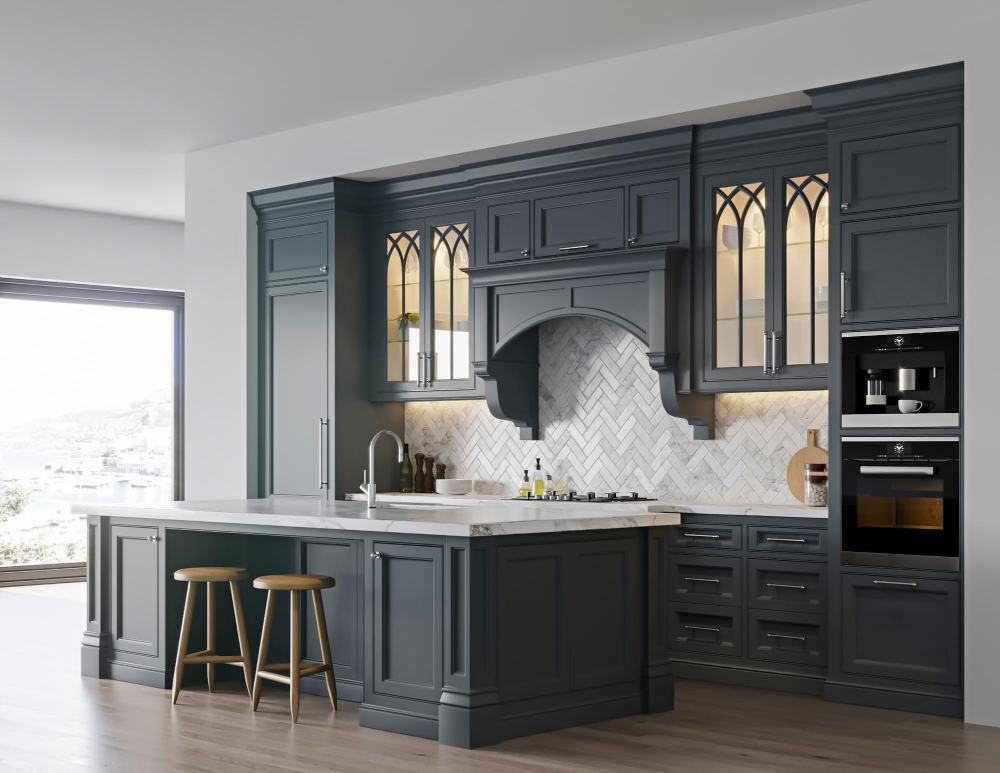
Customization allows you to achieve a unique look and feel that aligns with your personal style and preferences.
However, before opting for custom-made doors, there are some considerations to keep in mind. First and foremost is cost – customized cabinets can be significantly more expensive than pre-manufactured ones.
It’s important to ensure that the chosen material can support the desired thickness without compromising structural integrity or functionality.
Another factor is hardware compatibility – thicker doors require longer screws for hinges or handles which may not be readily available at local hardware stores. Therefore it’s essential to plan ahead when ordering custom-made cabinets so that all necessary components can be sourced accordingly.
While customization offers many benefits such as uniqueness and flexibility in design options; it also comes with additional costs and considerations such as material selection, structural integrity concerns among others mentioned above.
Door Thickness and Budget Considerations

Thicker doors are generally more expensive than thinner ones due to the additional material required in their construction. However, thicker doors also offer greater durability and longevity, which can save you money in the long run by reducing replacement costs.
If you’re on a tight budget but still want high-quality cabinets with thick doors, consider using less expensive materials such as MDF or plywood instead of solid wood. These materials can be just as durable and attractive when finished properly.
Another way to save money while still achieving a desired door thickness is by opting for partial overlay or frameless cabinet construction rather than full overlay or face frame styles. This reduces the amount of material needed for each door without sacrificing functionality or aesthetics.
Cabinet Door Thickness Trends
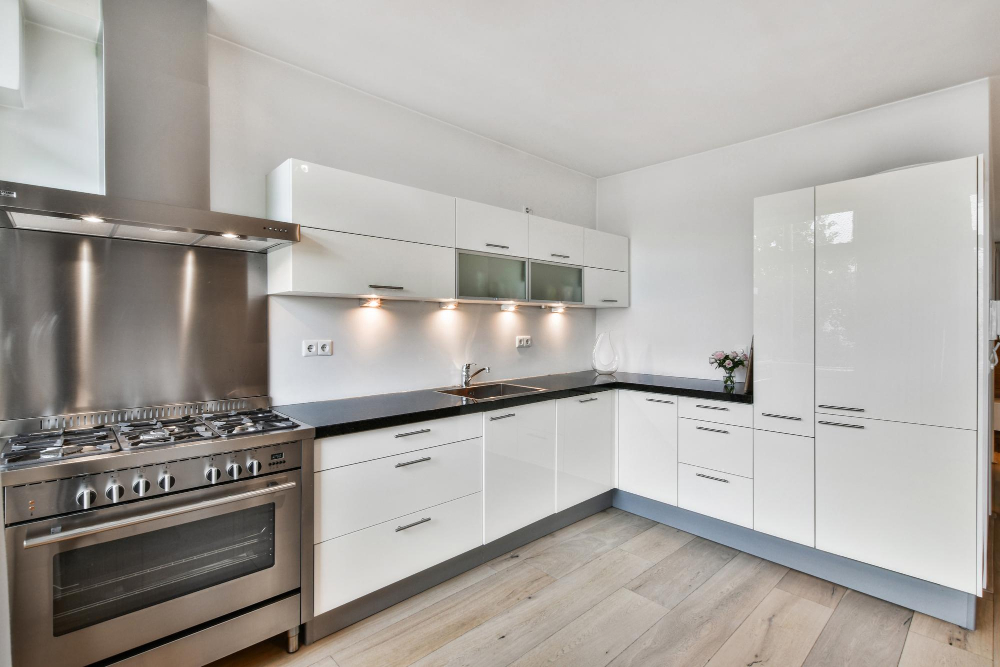
In recent years, there has been a shift towards thinner cabinet doors in modern kitchen designs. This trend is driven by the desire for sleeker and more streamlined aesthetics that complement contemporary design styles.
Thinner cabinet doors are also popular because they tend to be less expensive than thicker ones. They require fewer materials to manufacture, which translates into lower costs for homeowners who want to update their kitchens without breaking the bank.
However, it’s important not to sacrifice quality for cost savings when choosing your kitchen cabinets’ thickness. Thicker doors offer better durability and can withstand wear-and-tear over time better than thinner ones.
Ultimately, the decision on whether or not to follow current trends should depend on your personal preferences as well as practical considerations such as budget constraints and maintenance requirements.
Maintenance Tips for Different Thicknesses

Thicker doors are generally more durable, but they may require more upkeep than thinner ones. For example, solid wood cabinet doors are thicker and sturdier than MDF or thermofoil options but require regular polishing to maintain their shine.
On the other hand, thinner cabinet doors made from materials like MDF or thermofoil may be easier to clean due to their smooth surfaces. However, they may not hold up as well over time compared to thicker options.
Regardless of the thickness you choose for your kitchen cabinets’ door material type; it’s essential always to follow proper cleaning procedures recommended by manufacturers. Avoid using harsh chemicals that could damage the finish on your cabinets’ surface.
Considerations for Replacing Cabinet Doors
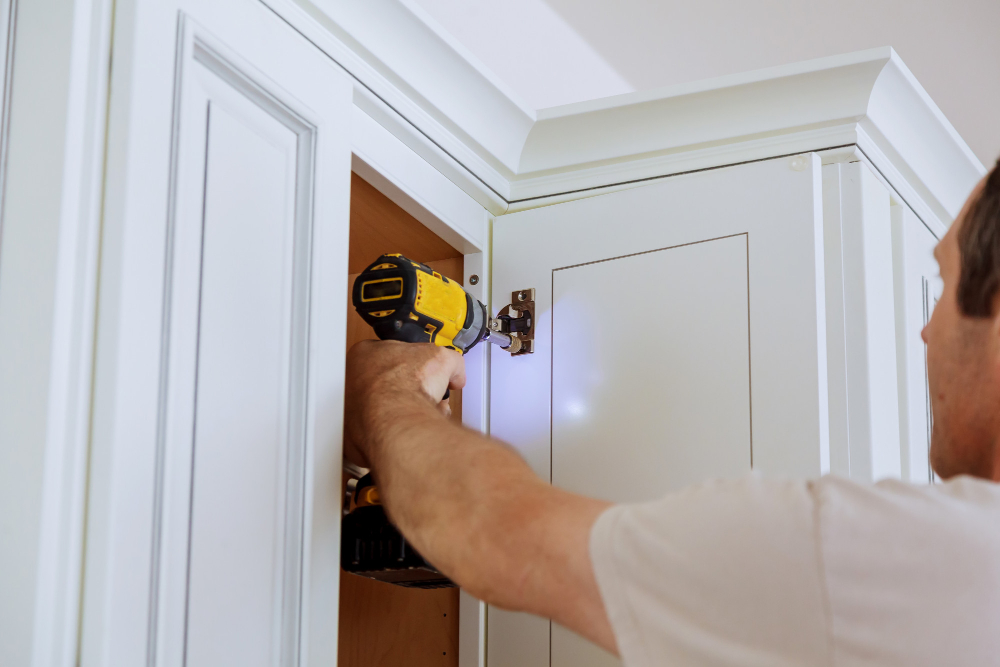
First and foremost, it’s important to measure the existing doors accurately so that you can order the right size replacements. You should also consider whether you want to replace just the doors or if you want to update other elements of your cabinets as well.
Another consideration is whether or not your current cabinets are structurally sound enough for new doors. If they’re old and worn out, it may be more cost-effective in the long run to replace them entirely rather than just swapping out their fronts.
When selecting new cabinet door thicknesses, think about how they will fit with any hardware that’s already installed on your cabinets. Thicker door styles may require longer screws or different hinges than thinner ones do.
Don’t forget about style! Replacing cabinet doors is an excellent opportunity to give your kitchen a fresh look by choosing updated designs and finishes that complement both each other and surrounding decor elements like countertops and backsplashes.
Selecting Cabinet Doors for Your Kitchen Remodel
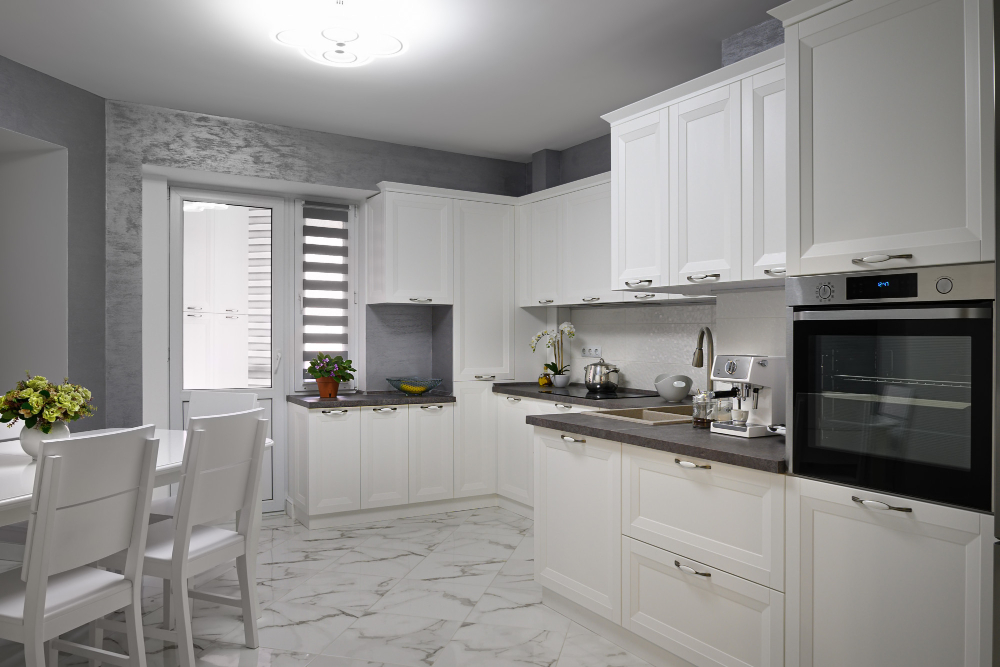
First and foremost, consider the overall style of your kitchen. If you have a modern or contemporary design, sleek and simple cabinet doors with clean lines may be the best choice.
On the other hand, if you have a more traditional or rustic look in your kitchen, raised panel or shaker-style cabinet doors may be more appropriate.
Another important factor to consider is durability and maintenance requirements. Cabinet doors made from solid wood tend to hold up well over time but require regular upkeep such as refinishing or repainting every few years.
Thermofoil cabinets offer an easy-to-clean surface that resists moisture but can peel over time.
Think about budget constraints when selecting new cabinet doors for your remodel project. Solid wood options tend to be pricier than MDF (medium-density fiberboard) alternatives while custom-made designs will cost significantly more than pre-fabricated ones.
By keeping these factors in mind when choosing new cabinetry for your home renovation project – style preferences; durability/maintenance needs; budget considerations – homeowners can make informed decisions on which type of door thickness works best within their unique circumstances!
FAQ
What is the thickness of a cabinet door?
The thickness of a cabinet door depends on the material, with wood doors being 3/4″ thick and MDF doors being 5/8″ thick.
How thick are shaker cabinet doors?
Shaker cabinet doors typically have a door frame thickness of 5/8-3/4 inches and a recessed center panel thickness of 1/4-1/2 inches.
What is the standard thickness of kitchen cabinet wood?
The standard thickness of kitchen cabinet wood is ¾-inch, as per ANSI HP-1 guidelines.
What thickness of plywood for cabinet doors?
For cabinet doors, it is recommended to use 3/8-inch thick plywood.
What factors determine the ideal thickness for kitchen cabinet doors?
The ideal thickness for kitchen cabinet doors is determined by factors such as material, construction method, design, and durability requirements.
Are there any advantages to using thicker or thinner cabinet doors in kitchen design?
Thicker cabinet doors offer increased durability and stability, while thinner doors provide a sleek, modern look and potentially lower cost.
How does the thickness of a cabinet door impact its durability and functionality?
The thickness of a cabinet door affects its durability and functionality by providing increased structural support and resistance to warping or damage.




